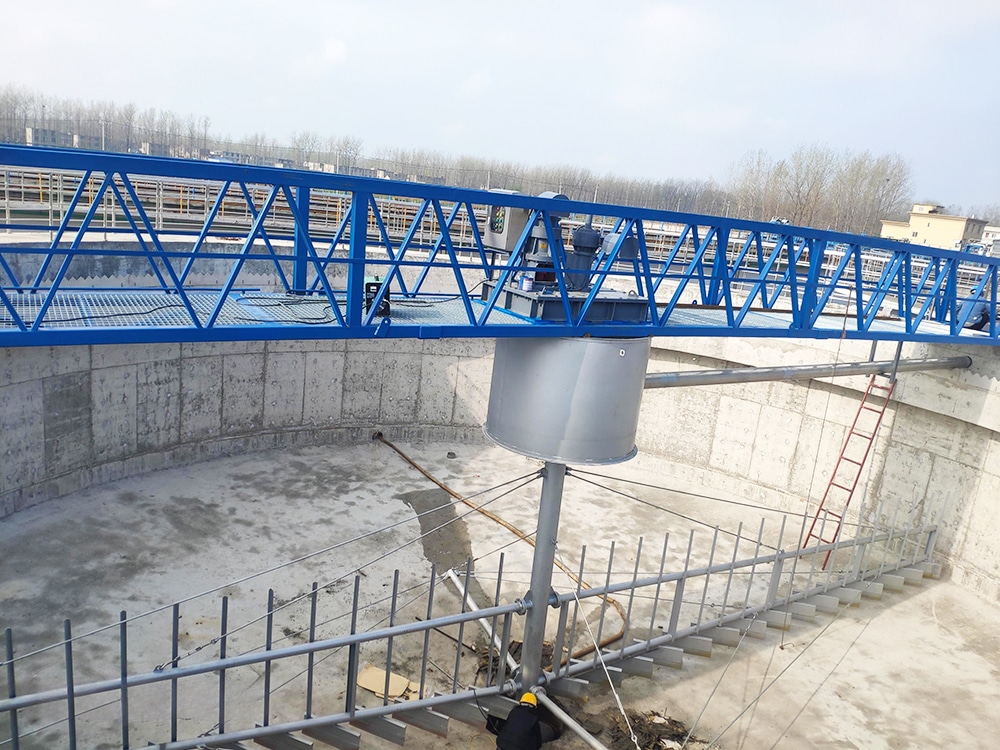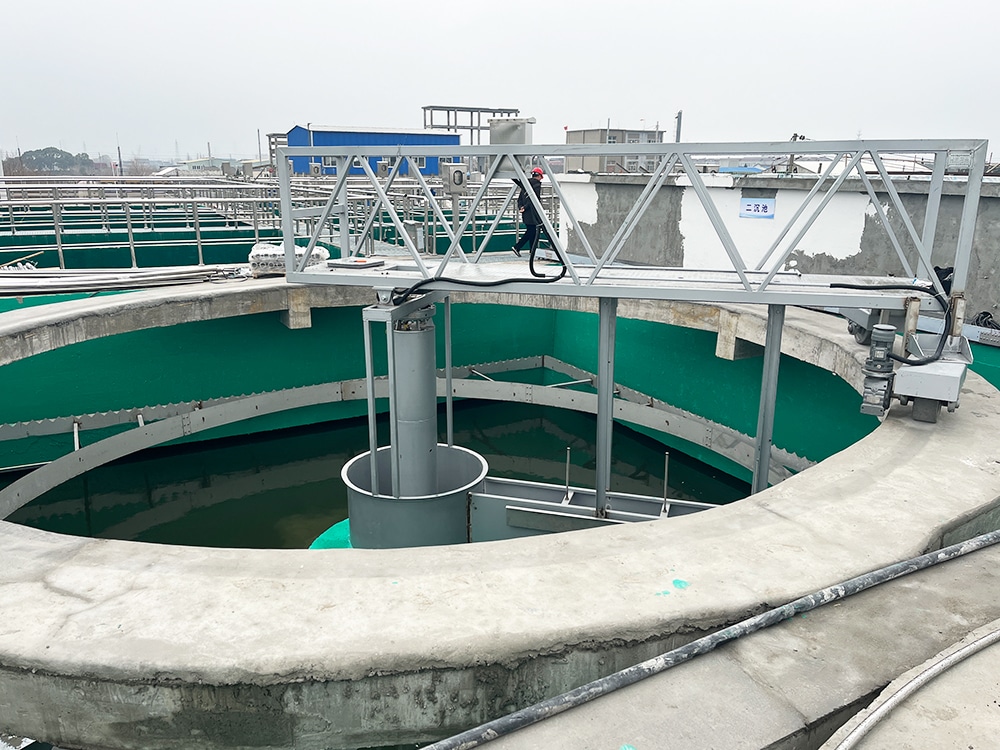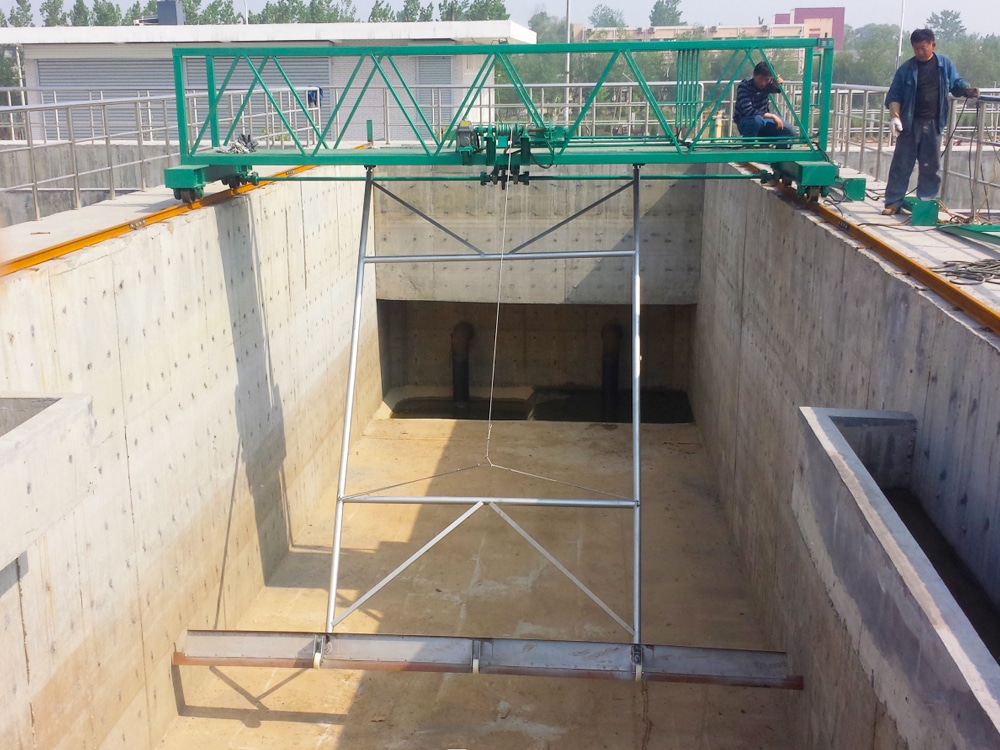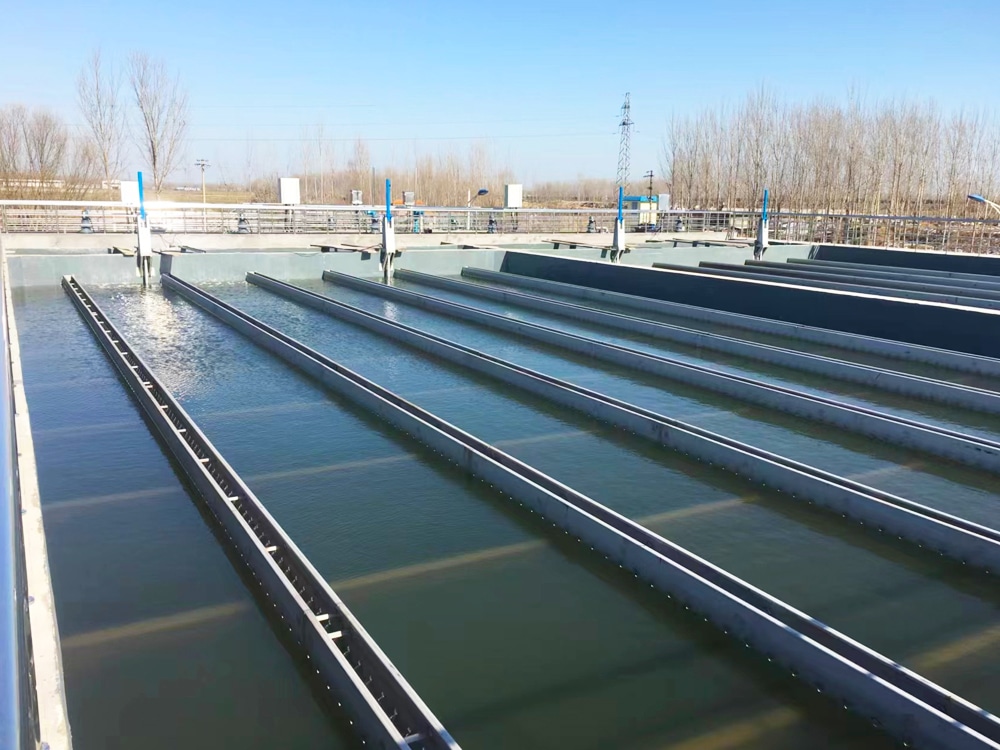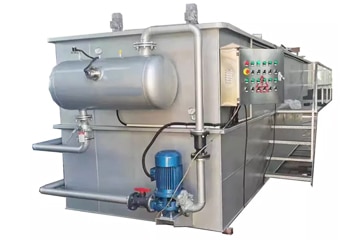Sludge Thickening
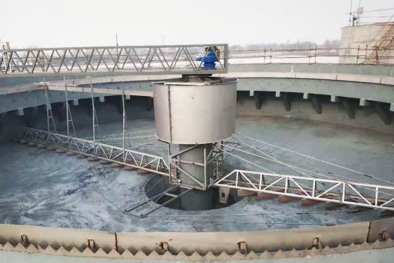
What is sludge thickening?
Sludge thickening is the process of physically or chemically removing water from sludge to increase its solids content and reduce its volume. Simply put, it means “squeezing” the sludge to make it drier.
Why do you need sludge thickening?
- Reduced sludge volume: The thickened sludge is smaller in size, making it easier to transport and handle and saving space.
- Reduced subsequent treatment costs: The lower water content of sludge reduces the energy and costs required for subsequent treatment processes such as dewatering, incineration or landfill.
- Increase sludge treatment efficiency: Thickening can increase the capacity of subsequent treatment equipment.
Sludge thickening methods
Gravitational concentration
Gravity thickening is essentially a sedimentation process, which is compression sedimentation. The gravity concentration tank can be divided into two types of continuous and intermittent according to its mode of operation. Continuous type is mainly used for large and medium-sized sewage treatment plant, intermittent type is mainly used for small sewage treatment plant or industrial enterprise sewage treatment plant. Gravity concentration tank is generally constructed using watertight reinforced concrete, with mud pipe, mud pipe and discharge supernatant pipe, the plane form has two kinds of circular and rectangular, generally more circular.
Intermittent gravity concentration pool of mud and water are intermittent, therefore, in the concentration pool at different heights should be set up more than one supernatant discharge pipe. Intermittent operation and management trouble, and unit treatment of sludge required pool volume is larger than the continuous type.
Continuous gravity thickening pool inlet and outlet are continuous, the sludge discharge can be continuous or intermittent. Spoke-flow thickeners are used when the pool is large; vertical-flow thickeners are used when the pool is small. Vertical flow thickening pool using gravity sludge discharge, spoke flow thickening pool more mud scraper mechanical sludge discharge, sometimes can also be used gravity sludge discharge, but the bottom of the pool should be made into a multi-bucket.
Concentration pool must simultaneously meet the supernatant clarification, mud solids concentration to meet the design requirements and high solids recovery rate of these three conditions. If the concentration pool load is too large, although the treatment capacity increases, but the concentration of concentrated sludge solids is low, the supernatant turbid, low solids recovery, concentration effect is poor; on the contrary, the load is too small, the sludge stays in the pool for too long, which may cause anaerobic fermentation of sludge, produce gas to make the sludge floated, and likewise make the concentration effect is reduced.
Center Drive Sludge Scraper
Peripheral Driving Sludge Scraper
Truss Sludge Scraper
Chain And Flight Scraper
Air flotation concentrate
The air flotation thickening method is mostly used to thicken sludge with lighter sludge particles (relative density close to 1), such as residual activated sludge and biofilter sludge. In recent years, it has also been popularized in the thickening of mixed sludge (primary sludge + residual sludge).
There are two kinds of air flotation thickening: partial reflux air flotation thickening system and no reflux air flotation thickening system, among which the partial reflux air flotation thickening system has more applications. In addition, the air flotation concentration tank is divided into two categories of round and rectangular, small air flotation device (processing capacity of less than 100m3/h) more rectangular air flotation concentration tank, large and medium-sized air flotation device (processing capacity of more than 100m3/h) more than the spoke flow air flotation concentration tank. Air flotation concentrator is generally constructed with watertight reinforced concrete, and small water volume is also made of welded steel plate or other non-metallic materials.
Air flotation concentration process: clarified water from the bottom of the pool, part of the external drainage, part of the water pump into the pressure dissolved gas tank pressurized dissolved gas. Dissolved gas water through the pressure reducing valve from the bottom into the water inlet chamber, decompression of the dissolved gas water released a large number of tiny bubbles, and quickly attached to the sludge particles to be flotation, carrying the solids to rise, the formation of scum layer. The thickened sludge is scraped out of the pool by the mud scraper on the surface of the pool.
Dissolved Air Flotation (DAF) System
Centrifugal concentration
For light sludge, centrifugal thickening achieves better results. In a high-speed centrifuge, the solid particles in the sludge and the water have different densities, so the centrifugal force is different and the two are separated. The centrifugal thickening method is characterized by high efficiency, short time, small area and good sanitary conditions.
The types of centrifuges used for sludge thickening include rotary centrifuges, sedimentation centrifuges and filtration centrifuges. In a sedimentation centrifuge, the material enters from the bottom of the rotating drum. When equilibrium is reached, solids settle out of the annularly flowing liquid layer and are deposited on the walls of the drum, while the thickened water overflows from the top. When the solids fill the drum, the feed is stopped, the speed of the drum is reduced, and a knife is inserted into the sludge to scrape the mud cake off the bottom. This cycle is automatic, with mud cake unloading taking up 10% of the cycle time. Chemical dosing is generally not required to obtain high solids recovery. However, because the equipment operates at low centrifugal forces and the discharge of the sludge cake is discontinuous, the solids handling capacity is very low.
The performance of a centrifugal thickener can be expressed in three indicators:
- Thickening factor, which is the ratio of thickened sludge concentration to the solids concentration of the influent sludge.
- Diversion rate, the ratio of clear liquid flow to influent sludge flow.
- Solid recovery rate, the ratio of the total amount of solids in the thickened sludge to the total amount of solids in the influent sludge.
Factors affecting sludge thickening
Sludge characteristics
- Sludge concentration: The initial concentration of sludge directly affects the thickening effect. The higher the concentration, the easier it is to thicken.
- Particle size distribution: Larger particles are easier to settle and are more favorable for gravity thickening. Smaller particles are better suited for thickening by air flotation.
- Specific Gravity: Particles with a high specific gravity are more likely to settle.
- Viscosity: Sludge with high viscosity has a high interaction force between particles, which is unfavorable for separation and has a poor thickening effect.
- Organic content: Sludge with high organic content has high microbial activity and is prone to produce gas, which affects settling.
- pH value: pH value affects the flocculation state of sludge, which in turn affects the thickening effect.
Types of thickening equipment
- Gravity thickener: sedimentation area, hydraulic retention time, sludge scraping method, etc. will affect the thickening effect.
- Air flotation thickener: aeration, bubble size, dissolved gas water saturation, etc. will affect the effect of air flotation.
- Centrifuge: speed, drum diameter, feed concentration, etc. will affect the separation effect.
- Hydrocyclone: feed concentration, cone angle, inner cylinder diameter, etc. will affect the separation effect.
Operating conditions
- Water intake: Too much water intake will dilute the sludge and affect the thickening effect.
- Temperature: Temperature affects the viscosity and microbial activity of the sludge, which in turn affects the thickening effect.
- pH value: pH value affects the flocculation state of sludge, which in turn affects the thickening effect.
- Chemicals: Adding chemicals such as flocculants can improve the flocculation of sludge and increase the thickening effect.
Other factors
- Age of sludge: If the age of sludge is too long, the activity of microorganisms will be reduced, and a large amount of sludge will be produced, which will affect the thickening effect.
- Pre-treatment of sludge: Pre-treatment of sludge, such as acidification, alkalization, etc., can change the nature of sludge, affecting the thickening effect.
Application of sludge thickening
Wastewater Treatment
- Municipal Wastewater Treatment Plant: Sludge thickening is the first step in the sludge treatment process of a municipal wastewater treatment plant. By thickening the sludge, the amount of sludge transported can be reduced and the load on the dewatering equipment can be lowered.
- Industrial Wastewater Treatment: For high concentration organic sludge or oil-containing sludge, thickening can effectively reduce the water content of the sludge to facilitate subsequent incineration or landfill treatment.
Industrial production
- Food Processing Industry: Organic sludge produced during food processing can be thickened to reduce the volume of sludge and lower treatment costs.
- Paper industry: Sludge produced during the paper making process can be used as fertilizer or fuel after thickening.
- Chemical industry: Sludge produced during chemical production can be thickened to reduce transportation and disposal costs.
Agriculture
Sludge as fertilizer: After harmless treatment, the thickened sludge can be applied to farmland as organic fertilizer to improve soil structure and soil fertility.
Specific application scenarios
- Treatment before sludge dewatering: After thickening, the water content of sludge is reduced, which is more conducive to the subsequent mechanical dewatering.
- Treatment before sludge incineration: After thickening, the water content of sludge is reduced, which can improve the incineration efficiency and reduce the smoke emission.
- Pre-landfill treatment: The reduced volume of thickened sludge can reduce the landfill area and prolong the service life of the landfill.
- Sludge Stabilization: By thickening the sludge, the stability of the sludge can be improved and the content of pathogenic bacteria and harmful substances can be reduced.

